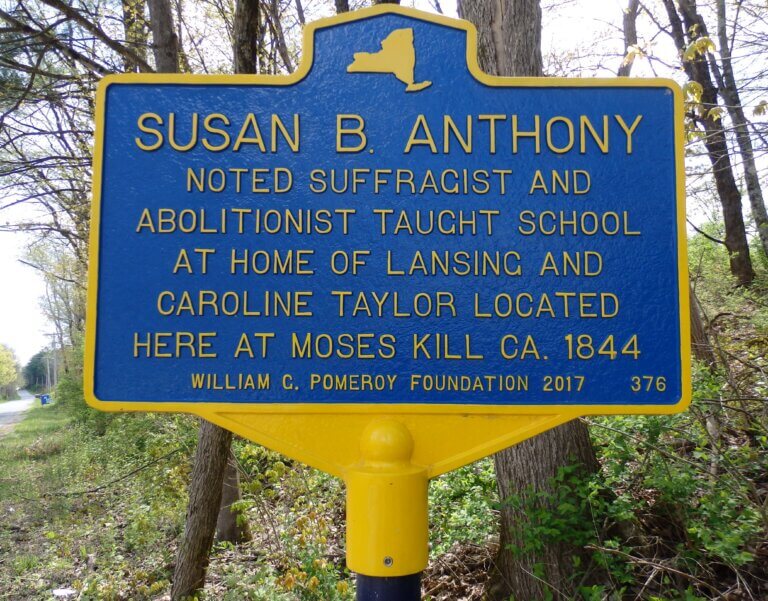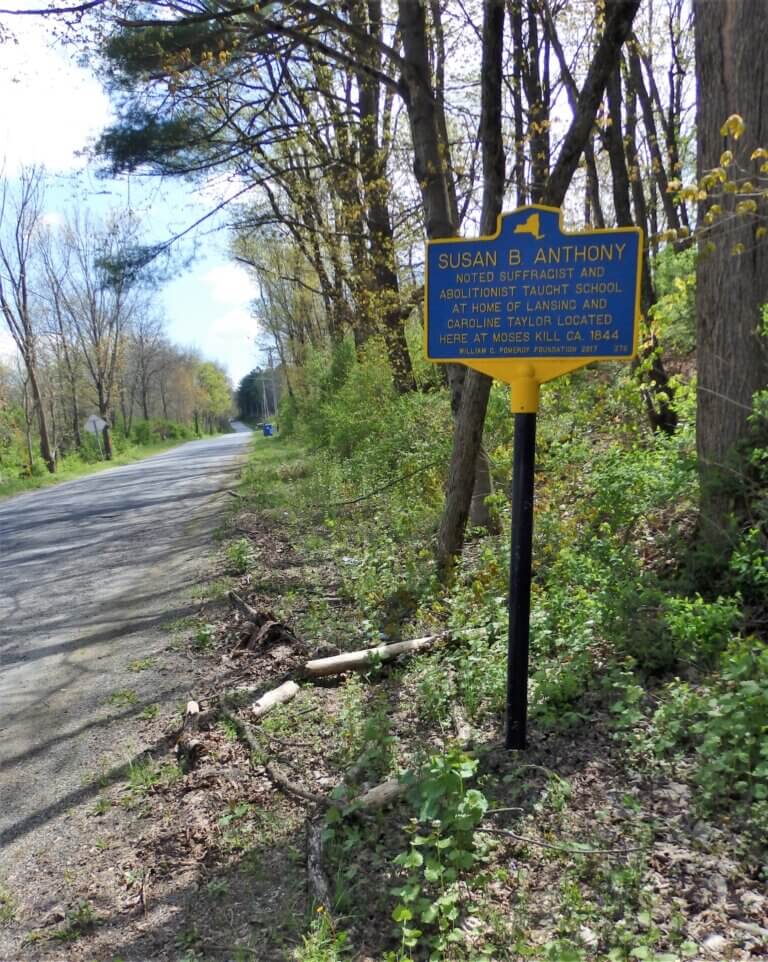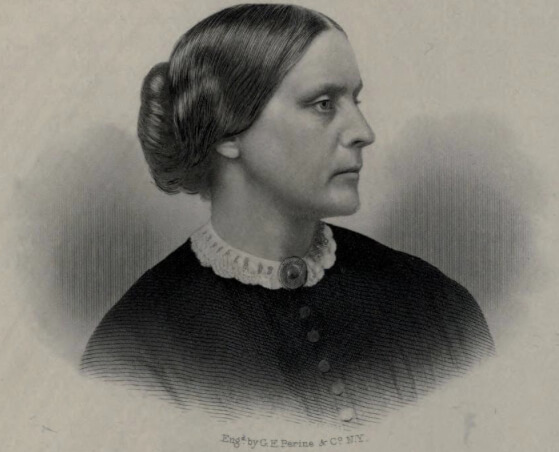SUSAN B. ANTHONY
- Program
- Subject
- Location
- Lat/Long
- Grant Recipient
-
NYS Historic
-
Site
- Patterson Road and Route 4, Fort Edward, NY
- 43.1974444, -73.58080555
-
Fort Edward Historical Association
SUSAN B. ANTHONY
Inscription
SUSAN B. ANTHONYNOTED SUFFRAGIST AND
ABOLITIONIST TAUGHT SCHOOL
AT HOME OF LANSING AND
CAROLINE TAYLOR LOCATED
HERE AT MOSES KILL CA. 1844
WILLIAM G. POMEROY FOUNDATION 2017
Prominent suffragist and women’s rights activist Susan B. Anthony taught for two years at the home of Lansing and Caroline Taylor located on this site. She attended her first political meeting during this time period and met the abolitionist reformer Abigail Mott.
Susan B. Anthony was born to a Quaker father and a Universalist mother in Adams, MA. The family later lived in Battenville, NY during her childhood. In 1838, the Anthony family lost much of their fortunes during a financial crash, resulting in their factory, store, and home being repossessed by creditors. Susan was also forced to leave her Quaker boarding school in Philadelphia. In 1839, they moved to Hardscrabble, near Battenville, where Susan’s father built a satinet (thin or imitation satin fabric) factory and grist-mill. At the age of 19, Susan went to New Rochelle to work as an assistant at Eunice Kenyon’s boarding school, but due to the principal’s illness, she had to take charge of all responsibilities. For the next few years she taught at Center Falls and also worked at home, as well as visited relatives. Between the years of 1840 and 1845, both Susan and her sister Hannah taught at various schools or homes, earning an average of only about two dollars a week plus room and board. (Harper, 1898)
Susan B. Anthony had spent the summer of 1843 teaching in Cambridge, MA before coming to Fort Edward to teach for two years at the home of Lansing and Caroline Taylor. (Harper, 1898) The Taylors lived in Fort Edward according to the 1850 census, and their property was located next to the Champlain Canal which ran parallel to the Hudson River. (Map, Washington Co., 1853)
While staying in Fort Edward with the Taylors, Susan B. Anthony engaged in social visits with friends and other politically minded women, including people she would work closely with in her future suffragist activism. In a letter from July 11, 1844, Susan describes her first attendance to a political meeting. Caroline Taylor was the daughter of Judge Halsey Wing, and apparently was involved in Whig politics. She took Susan B. Anthony to a Whig convention in Sandy Hill, NY, and Susan reported in her letter that she “enjoyed every moment of it.” Susan’s letter also reports that Abigail Mott visited the Taylors with a companion by the last name Worthington. Mott was a Quaker, abolitionist, and reformer, similar to Anthony and her father. Her friend Mrs. Worthington, on the other hand, was apparently a devout Methodist. During their visit, Mott would have long discussions with Susan B. Anthony about the doctrine of Unitarianism. After, Mrs. Worthington would go up and pray with Anthony to undo what she saw as Mott’s heresies. (Harper, 1898)
Susan and her family moved to Rochester in November of 1845 and the next year she received an offer to teach at the Canajoharie Academy, which she accepted. She also soon joined and became secretary of the local Daughters of Temperance society, but she did not yet fully commit herself to promoting reform. After the academy closed in 1849, she moved back to Rochester to help manage her family’s farm but soon became more and more involved with social activism supporting women’s rights, abolitionism, and temperance. Within a couple years she fully devoted herself to this work and gave up teaching, instead earning most of her money from public speaking fees. (Harper, 1898)
Susan B. Anthony would go on to become one the country’s most renowned suffragists and social reformers. She was famously arrested for attempting to vote in Rochester in 1872, and her trial made headlines and prompted national discussion the following year. An amendment giving women the right to vote was first introduced to Congress in 1878 and was arranged by Elizabeth Cady Stanton and Susan B. Anthony. (Harper, 1898) It would later be ratified as the 19th Amendment.
A historic marker, funded by the William G. Pomeroy Foundation, was erected at the site of the Lansing and Caroline Taylor’s home where Susan B. Anthony taught in 2017.



